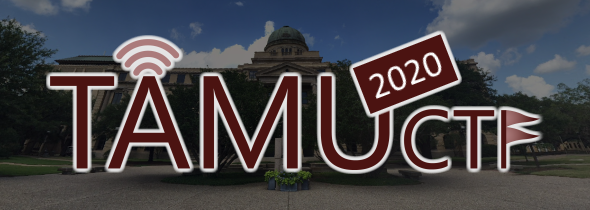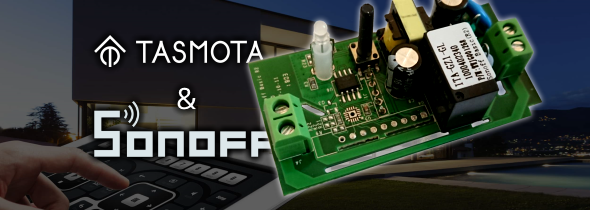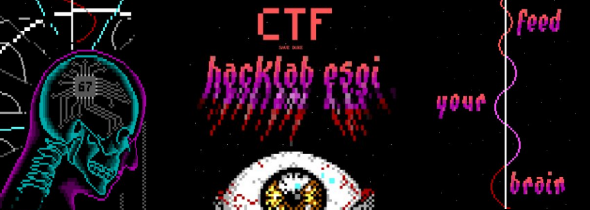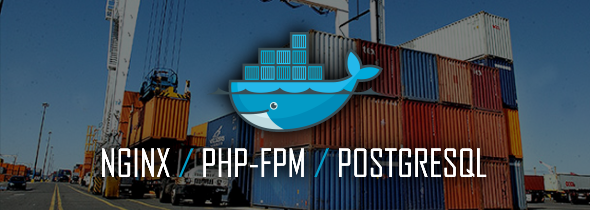[EN] [CTF] TAMU - Scenario MCCU
Write-up for challenge 'Scenario MCCU' (Forensics, 700 pts) from TAMU CTF 2018.
This was a series of challenges that involved a compromised WordPress website. Several proofs (screenshots, log extracts, WordPress archive, etc.) allowed us to answer questions.
00_intrusion (Scenario - MCCU, 25pt)
The financial institution MCCU received a call from a Karen Brebs. Ms. Brebs told an employee that she was a cyber-security jounalist, and that the MCCU website had been compromised. Ms. Brebs emailed the attached screenshot.
To complete this challenge, answer the following question(s):
- Is this a real threat (yes/no)?
- What’s our next step (A: take the website offline and reinstall the website, B: leave the website up and investigate further, C: take the website offline and investigate further)?
The screenshot shows a webshell accessible from the URL https://midcoastfcu.com/wp-content/plugins/hello.php. This is a real threat for MCCU. Because the site is a WordPress, the safest way to eliminate the threat is to take the site offline and reinstall the site.
Answers
|
|
01_logs (Scenario - MCCU, 50pt)
We’ve made contact with the system administrator of the MCCU website - this is not something they developed.
We are waiting on more details from the administrator about the website’s configuration. All we know is that it has two services - Web and SSH.
The only thing we’ve received so far are the logs for the web server and ssh server. MCCU really wants to know how they were compromised.
To complete this challenge, answer the following question(s):
- Which service was used to compromise the server (web/ssh)?
- Which log file led you to this conclusion (access.log, error.log, auth.log)?
- What was the IP of the suspected attacker?
- What was the date of the suspected compromise (MM/DD-HH:MM:SS)?
- If the attack was web based, what was the URI of the request (/images/pic.png)? Or If the attack was ssh based, what was the username the attacker compromised?
The server has been compromised through the website. It can be seen in the log file access.log which lists the HTTP requests received by the server. At first shy, the attacker (172.16.20.24) tests several potential flaws (HTTP downgrade, WordPress xmlrpc, etc.) before finding a vulnerable PHP page. In the auth.log file, we can see that a new user “admin” was created at 20:35:21. The server was probably compromised before that date. When we look at the received HTTP requests a bit earlier, we see a PHP file in the upload directory (/wp-content/uploads/EYcNS.php). The attacker thus found a way to upload this file, and by going back again the history, we identify the source of the compromise: /wp-content/plugins/wpshop/includes/ajax.php.
|
|
|
|
Answers
|
|
02_Analysis (Scenario - MCCU, 75pt)
The administrator informed us that the server is an Ubuntu server running nginx 1.1.19 with a Wordpress 4.1.0 install.
The administrator also sent a tar of the Wordpress installation (attached).
To complete this challenge, answer the following question(s):
- List the plugins and their versions in lexicographic order separated by commas (alpha.1.3.4,bravo.5.4,charlie.0.3,…).
- List the plugins connected to the intrusion and their versions the same way as in questions 1 (alpha.1.3.4,charlie.0.3,…).
- List any CWEs for said plugins and their versions in lexicographic (CWE-NUMBER).
We now have the complete archive of the compromised Wordpress. So we just use grep to list the versions of the different plugins. The versions in the PHP files are not necessarily correct, so you have to look in the readme.txt files for the stable tag.
host:~$ grep -nr "Stable tag" ./*
./akismet/readme.txt:6:Stable tag: 3.0.4
./contact-form-7/readme.txt:7:Stable tag: 3.1.1
./duplicate-post/readme.txt:6:Stable tag: 0.5
./jetpack/readme.txt:6:Stable tag: 2.0.7
./jetpack/modules/contact-form/readme.txt:4:Stable tag: 2.3
./jetpack/modules/sharedaddy/readme.txt:6:Stable tag: trunk
./jetpack/modules/shortcodes/videopress.php:19:Stable tag: 1.5.4
./ninja-forms/readme.txt:7:Stable tag: 1.3.5
./w3-total-cache/readme.txt:6:Stable tag: 0.7
./wpshop/readme.txt:7:Stable tag: 1.3.9.5
./wp-super-cache/readme.txt:5:Stable tag: 0.3We saw during the previous challenge that the entry point was the wpshop plugin. A small search allows to obtain the following link: https://wpvulndb.com/vulnerabilities/7830
Answers
|
|
03_Forensics (Scenario - MCCU, 100pt)
Now that we have some idea of how the intrusion took place, let’s take a look at what’s changed since the attack.
To complete this challenge, answer the following question(s):
- List file paths from wordpress/ (e.g. readme.txt,wp-admin/index.php) that were created after the attack time found in challenge 01 lexicographic and separated by commas (dir/file1,dir/file2,…).
- List any files that have any evidence that points to them be exfiltrated by the attacker as in question 2 (dir/file1,dir/file2,…).
- List all unique sha1 hashes of these files in lexicographic order separated by commas (hash1,hash2).
- What shell was used to get command execution? (e.g. /bin/bash, /bin/sh, /bin/ksh, etc…)?
This challenge uses the file found in challenge 02.
A simple search by filtering on the last edit date of the files allows to obtain the list of files created by the attacker. In the access.log file, we can see that only the .mysql.db file has been exfiltrated from the server. Finally, when we look at the content of PHP files created, we find that the shell used was /bin/dsh.
|
|
|
|
host:~$ find . -type f -newermt '2017-11-08 20:32:49' -ls
410155 184 -rw-r--r-- 1 root www-data 186411 Nov 9 06:38 ./.mysql.db
414710 4 -rw-rw-rw- 1 www-data www-data 538 Nov 8 23:08 ./wp-content/w3tc-cache/index.php
414709 4 -rw-rw-rw- 1 www-data www-data 199 Nov 8 23:08 ./wp-content/w3tc-cache/.htaccess
414711 4 -rw-rw-rw- 1 www-data www-data 342 Nov 8 23:08 ./wp-content/advanced-cache.php
410700 8 -rw-rw-rw- 1 www-data www-data 4572 Nov 8 23:08 ./wp-content/w3-total-cache-config.php
413876 4 -rw-r--r-- 1 www-data www-data 1851 Nov 9 06:39 ./wp-content/plugins/hello.php
414713 4 -rw-rw-rw- 1 www-data www-data 295 Nov 8 23:08 ./wp-content/db.php
410152 4 -rw-r--r-- 1 www-data www-data 1851 Nov 9 06:39 ./.wp-config.php
410154 4 -rw-r--r-- 1 www-data www-data 1851 Nov 9 06:39 ./wp-register.php
410150 4 -rw-r--r-- 1 www-data www-data 1851 Nov 9 06:39 ./wp-logout.phpAnswers
|
|
04_Privilege_Escalation (Scenario - MCCU, 125pt)
Now that we have a better understanding of how the attacker got in to the system, and that they had shell access, let’s figure out what level of access they were able to obtain.
Attached are all history files that were found on the hard drive and the shell file you identified in challenge 03.
To complete this challenge, answer the following question(s):
- What was the highest level of access the attacker able to obtain (username)?
- List the sha1 hash of any files that may have been used to gain the higher level of access (hash0,hash1,hash2,…).
- What CVE was used to escalate privileges (CVE-YYYY-NUMBER OR MSYY-NUMBER)?
This challenge also uses the same image from challenge 02.
The attacker was able to obtain a root access on the server. He uploaded a webshell using the ajax.php file from the wpshop plugin, then he uploaded and executed the / tmp / dc64 file. Then he elevated his privileges using DirtyCow root escalation privilege.
host:~$ sha1sum 02\_analysis/evidence\_2/wordpress/wp-content/plugins/wpshop/includes/ajax.php
4efaa331787b5cc077892ded823509967287efb0 02\_analysis/evidence\_2/wordpress/wp-content/plugins/wpshop/includes/ajax.php
host:~$ sha1sum 04\_Privilege\_Escalation/evidence/dsh
4cbf8cb09a9627a1ee596df0988a99e48376b9df 04\_Privilege\_Escalation/evidence/dsh
host:~$ xxd 04\_Privilege\_Escalation/evidence/dsh | grep -C 2 Dirty
000a42b0: 7267 6574 2074 6f20 7265 7374 6f72 6520 rget to restore
000a42c0: 2f74 6d70 2f62 616b 0000 0000 0000 0000 /tmp/bak........
000a42d0: 4469 7274 7943 6f77 2072 6f6f 7420 7072 DirtyCow root pr
000a42e0: 6976 696c 6567 6520 6573 6361 6c61 7469 ivilege escalati
000a42f0: 6f6e 0000 0000 0000 5261 6369 6e67 2c74 on......Racing,tAnswers
|
|
05_backdoor (Scenario - MCCU, 150pt)
The administrator sent over the following netstat output, does anything look bad?
To complete this challenge, answer the following question(s):
- What IP address is the malicious program using?
- What port is the malicious program using?
- What is the filename of the malicious program?
- What is the PID of the malicious program?
We have the result of the netstat command. We know the IP address of the attacker (172.16.20.24) and therefore we can see the network connections established between him and the server.
|
|
Answers
|
|
06_persistence (Scenario - MCCU, 175pt)
The administrator has went ahead and updated all the Wordpress plugins, quarantined the files made by the user, and changed system credentials.
The administrator has also informed us that the admin user doesn’t look familiar to them, so they sent over /etc/passwd and /etc/group.
To complete this challenge, answer the following question(s):
- When was the admin user created (MM/DD-HH:MM:SS)?
- Was this user created after the intrusion (yes/no)?
- List the groups this user is a part of in lexicographic order separated by commas (group1,group2,…).
- Is it probable this user was created by the attacker (yes/no)?
This challenge uses evidence found in previous challenges.
To answer these questions, we need to go back to the log files. In the auth.log file, we can see that an “admin” user is created, then delete, and then create again at 20:35:29. The root.bash\_history file confirms this creation, first with the useradd command and then with adduser. The user “admin” is then added to the group “sudo”. Then the attacker tries an SSH connection and the sudo su command to make sure of its persistence.
|
|
Answers
|
|
 Cet article est mis à disposition selon les termes de la Licence Creative Commons Attribution-ShareAlike 4.0 International.
Cet article a été publié il y a 801 jours, son contenu peut être inexact, voire erroné, et l'application des conseils ou consignes présents dans cet article doit être fait à votre propre appréciation. L'auteur de l'article ne pourra être tenu responsable des inconvénients pouvant résulter de l'application des conseils et consignes énoncés dans cet article.
Cet article est mis à disposition selon les termes de la Licence Creative Commons Attribution-ShareAlike 4.0 International.
Cet article a été publié il y a 801 jours, son contenu peut être inexact, voire erroné, et l'application des conseils ou consignes présents dans cet article doit être fait à votre propre appréciation. L'auteur de l'article ne pourra être tenu responsable des inconvénients pouvant résulter de l'application des conseils et consignes énoncés dans cet article.





Share this post
Twitter
Google+
Facebook
Reddit
LinkedIn
StumbleUpon
Pinterest
Email